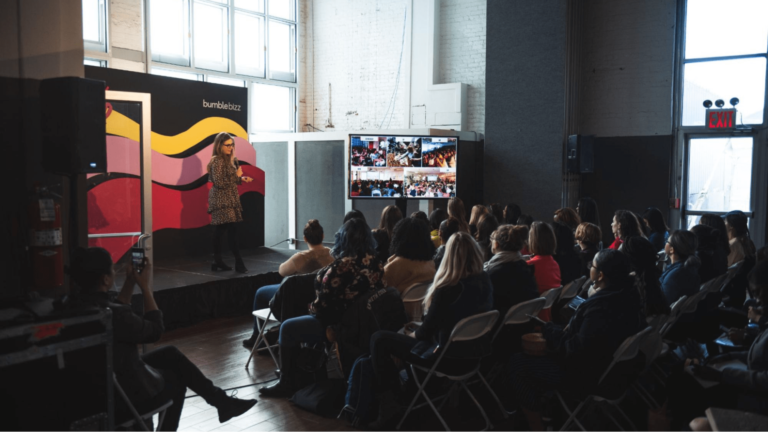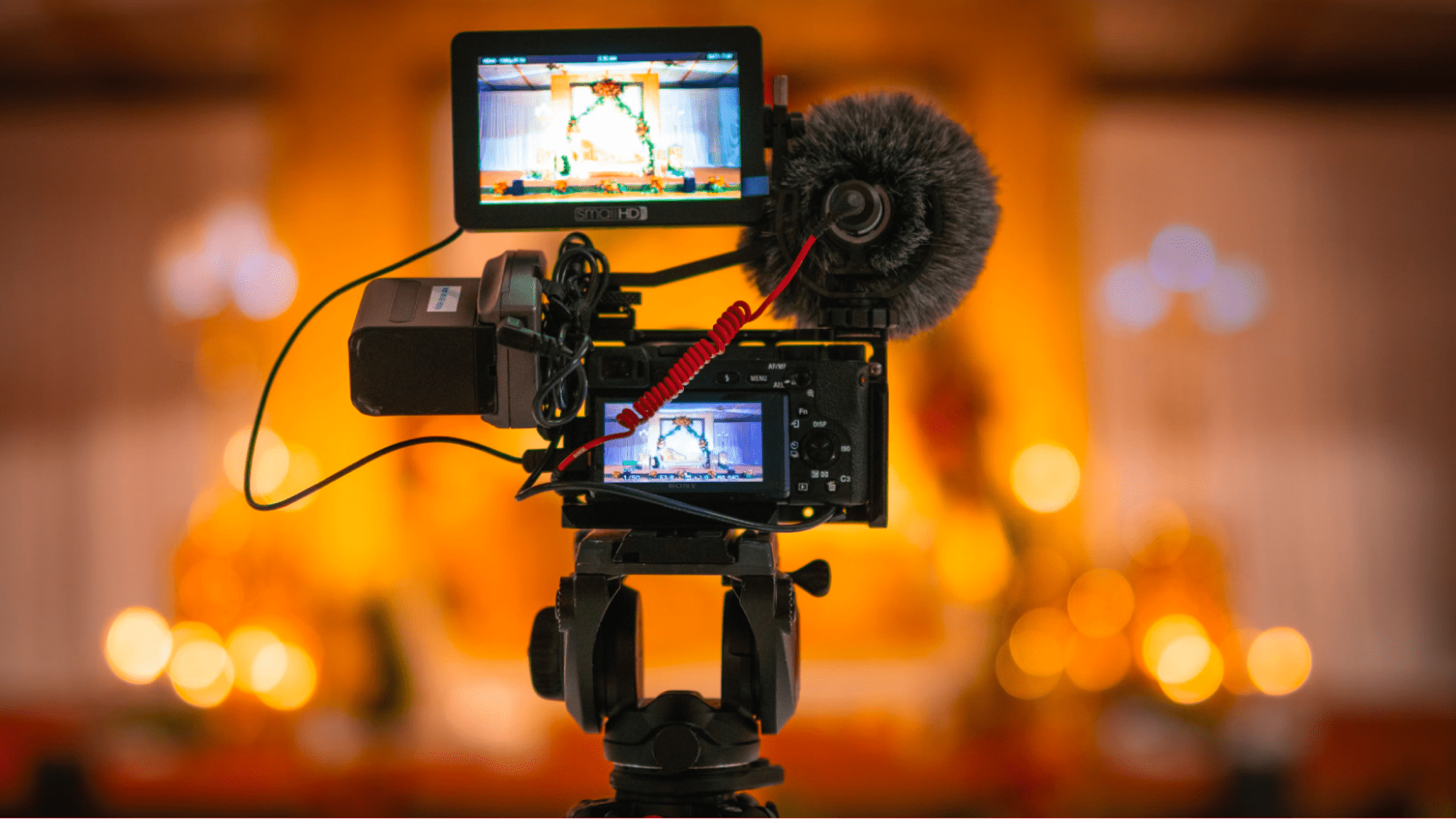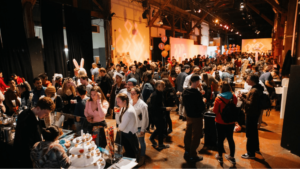When it comes to video, YouTube is the undisputed king. It’s set to reach 1.2 billion users by 2029 — which isn’t surprising given that the average person spends over 11 minutes streaming live videos on YouTube on their smartphone.
With a market of that size, it makes perfect sense for you to livestream parts of your hybrid events or remote events on YouTube. YouTube will open your event up to a huge audience — and we want to help you make it happen.
At Eventbrite, we’ve spent over a decade helping event organizers bring their events online, and we’ve learned a thing or two about livestreaming events successfully.
Read on to find out what YouTube Live is, how to livestream on YouTube, and get pro tips on how to livestream an event on YouTube, plus find out how Eventbrite can support your livestreams and boost your ticket sales.
Table of contents
How to livestream on YouTube: what are the benefits?
How to livestream on YouTube: step by step
How to use YouTube Premiere for your events
Pro tips for livestreaming your event on YouTube
What is YouTube Live?
YouTube Live allows you to broadcast a video to your audience in real time from any device. While you’re livestreaming your event, you can interact with your audience on live chat and monitor how your stream is performing, thanks to real-time analytics.
If your stream is less than 12 hours, YouTube will automatically archive a stream recording for you. You can also create highlight clips while you’re streaming your event to archive later.

How to livestream on YouTube: What are the benefits?
We’ve already pointed out that people spend a lot of time on YouTube. But as an event organizer, there are many benefits to livestreaming video on YouTube as part of a virtual event or hybrid event.
But don’t just take our word for it — let’s crunch the numbers.
Live video engages your attendees
People love live video. Research shows that users engage with real-time comments five times more on YouTube Live streams than they engage with comments on pre-recorded videos.
Why? Because live video is a shared experience. No matter people’s location, everybody is seeing your video for the very first time — building a sense of comradery and togetherness across your community.
And thanks to platforms like YouTube, they’re able to discuss that shared experience and comment in real time.
You can even gamify your engagement using YouTube features like Super Chat and Super Stickers. These features enable your viewers to stand out in a live chat by paying to pin their messages to the top of a live chat feed or show they’re true fans with digital stickers — raising extra money for your business in the process.
Event organizer Christiana Gaudet livestreams her free tarot sessions on YouTube as a way to open her event up and make it more accessible for those who might not be able to travel.
She offers a free one-hour community reading and includes links to her paid services in her bio. Without livestreams, she’d have to source a venue for this taster or sit outside in the cold and hope that someone’s interested. Instead, she’s creating unique and engaging livestreams that people from all over the world absolutely love!
Live video grows attendance
You want to get your events in front of more people, and live video content can help.
Because it’s more shareable and more engaging than pre-recorded video, 90% of video marketers say live video has helped them increase brand awareness. It also helps create brand recognition across the globe by opening up your virtual stream to an audience that might not otherwise be able to make it to your in-person events.
That builds a sense of FOMO (Fear Of Missing Out) around your events, which can boost ticket sales when it’s time to promote new events.
And because younger audiences like Gen Z like to watch videos together, livestreaming has the potential to double or triple your virtual event attendance.
Ready to start livestreaming?

Live video is cost-effective
Streaming platforms are a smart way to reduce expenses.
When it comes to getting a return on investment (ROI), 90% of marketers say video delivers the best value for money. That makes a lot of sense, given that video enables event organizers to reach such a huge number of people.
Streaming an event on YouTube also removes the requirement for expensive streaming software.
For inspiration, take a look at Brookline Booksmith and the author events they regularly livestream on YouTube. Their recent Chris Molanphy with Maura Johnston: Old Town Road event was streamed free of charge to give everyone a chance to connect with amazing authors from all over the world — without having to shell out loads of money or board a plane.
Meanwhile, extra ticketing options meant you could also donate to the store or buy a signed copy of the book to collect later.
How to livestream on YouTube: Step by step
Now that we’ve covered why you should livestream on YouTube, let’s break down the steps to broadcasting your event.
Step 1: Enable livestreaming
Before we can cover how to livestream on YouTube, it’s important to note there are restrictions on who’s allowed to enable livestreaming.
To livestream, you must:
- Have at least 50 subscribers. That being said, there are also age restrictions — so if you’re between the ages of 13 and 17, you need at least 1,000 subscribers to stream content from a mobile device.
- You must verify your channel.
- You can’t have had any streaming restrictions on your account for the past 90 days.

To enable livestreaming on a mobile device or a computer, simply:
1 . Open the YouTube app or visit YouTube.com
2 . Click “Create”
3 . Click “Go live”
If this is your first time livestreaming, your first livestream may take up to 24 hours.
Want to let viewers pause or rewind your livestream after you’ve started? Turn on the DVR function. All you have to do is:
1 . Open YouTube Studio
2 . Click “Create”
3 . Select “Go live”
4 . Start your stream using the Stream tab
5 . On the stream dashboard, choose “Enable DVR”
Step 2: Choose your streaming method
After enabling livestreaming content on your account, you need to choose how to livestream on YouTube: via a mobile device, a webcam, or with an encoder.

To help you choose the best option for your event and your audience, let’s break down the key differences between each method:
- Mobile device: This method is ideal for vlogging or quick event updates like a behind-the-scenes video showing followers your event setup due to minimal tech requirements. All you need is access to decent internet speeds and your chosen device.
- Webcam: This method is ideal for formal event updates like line-up announcements for registrants or a webinar.
- Encoder: This method requires a bit more technical know-how and gear, but it’s ideal for streaming sports, music performances, networking events, or conferences. An encoder lets you share your screen (which is perfect for gaming streams), use external audio and video hardware, and manage advanced production (like a few cameras and microphones). Note that if you use an encoder, you’ll also need to set up a stream key.
The streaming method you choose will depend a lot on the type of event you’re running and the type of stream you want to create for your guests. That’s why you might want to play around with different formats before your livestream and watch them back to decide which format suits you best.
Step 3: How to schedule a livestream on YouTube
Want to go live later? Schedule your stream in advance by choosing a set date and time on YouTube.

Here’s a step-by-step guide explaining how to schedule a livestream on YouTube:
1 . Open YouTube (on your phone or computer)
2 . Click the “Create” icon on the upper-right portion of the page
3 . Select “Go Live”
4 . Next, choose “More Options”
5 . Go to the upper right-hand corner and choose “Schedule Stream”
How to use YouTube Premiere for your events
YouTube Premiere streams pre-recorded videos and schedules pre-recorded material that people can watch in real time and leave live comments on.
That means you’re still able to create that shared experience of everyone watching your video premiere together — even though the event you’re showing off might’ve happened ages ago. This format tends to work really well if you want to showcase pre-recorded portions of virtual events or build excitement and premiere your event preview video to the world.
It’s also a great way to build hype around upcoming virtual event streams you might be setting up and ensure people don’t forget about your upcoming video content because they’ll get push reminders.
How to set up a YouTube Premiere for your event
The process is fast and simple. Just bear in mind you’ll need to do this using the YouTube Studio platform — which you can only access on a laptop or desktop computer.

Just follow these steps:
1 . On your computer, go to studio.YouTube.com.
2 . Click “Create”.
3 . Select “Upload videos”.
4 . Select your chosen video.
5 . Enter your video details (like its name and description).
6 . Click “Save”.
7 . Set your video to “Public”. You can also change your video privacy settings to “Private” or “Unlisted” if you only want certain people to be able to find the stream.
8 . To premiere your video instantly, select “Set as instant Premiere”.
9 . To schedule your video, click “Schedule”. You can then enter a date and time before selecting “Set as Premiere”.
10 . Click “Done” or “Schedule”.
You can see how it’s done in real time here:
Pro tips for livestreaming your event on YouTube
YouTube hosts all kinds of livestreams. To help boost your event streams and get all eyes on you, try out these three pro streaming tips.
Tip #1: Make sure you enable a live redirect
YouTube’s Live Redirect is an advanced settings feature that lets you automatically push viewers to a new video once the video they’re watching has finished.
For example, let’s say you’re livestreaming a behind-the-scenes video of your entertainers rehearsing. Once your event livestream ends, you can set up this autoplay feature. It’ll then automatically move everybody that was watching your video over to the new video, Premiere, or livestream of your choice.
The idea here is that everybody on your event channel gets to view different types of content, leading to increased brand exposure and increased ticket purchases for future events.
Here’s how it’s done:
Tip #2: Perform multiple dry runs
There’s nothing more embarrassing than mobile streams without working sound or where the front-facing camera turns on accidentally.
So when it comes to how to livestream on YouTube successfully, you’ve got to make sure things don’t go wrong. That means performing test runs to ensure your equipment works properly. That means testing your cameras, internet speeds, and microphones. By practicing in advance, you’ll still have time to adapt and change your streaming method prior to your event.
Pro tip #3: Create a Facebook event to push to your livestream
A strong social media presence is essential to successful event marketing — which is why you should be promoting your YouTube livestreams on social channels like Facebook.
Facebook events allow you to promote your livestream. When someone expresses an interest in the event, they’ll then get automatic push notifications to let them know your YouTube stream is about to start.
If your YouTube livestream is part of a ticketed event, you can also use Eventbrite to sell tickets directly through Facebook. This interactive feature effectively embeds your Eventbrite checkout so people can buy tickets without leaving the Facebook app.
Ready to start livestreaming?
If you want to start livestreaming, YouTube’s popularity and footprint are growing by leaps and bounds. Its range of exclusive features is ideal for event organizers looking to expose a wider audience to their brand, sell event tickets, and create immersive experiences for their fans.
Best of all, the streaming process is simple. Just remember to follow our step-by-step guide on how to livestream on YouTube, and try out our pro tips. For even more support, explore what Eventbrite has to offer.
Our marketing tools, app integrations, and interactive features — like the ability to sell tickets directly through Facebook — are amazing ways to plan, promote, and execute the perfect event livestreams.






